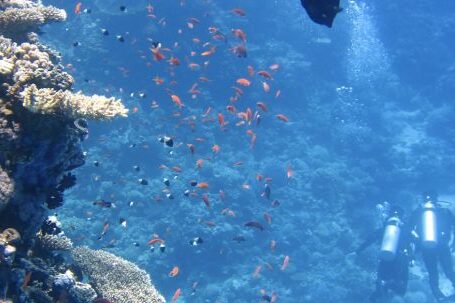Coral reefs are some of the most diverse and important ecosystems on the planet. They provide shelter and food for a wide variety of marine life, protect coastlines from storms, and contribute to the global economy through tourism and fishing. However, coral reefs are under threat from a phenomenon known as coral bleaching. In this article, we will explore how to spot coral bleaching and identify signs of stress in reefs.
Understanding Coral Bleaching
Coral bleaching occurs when corals expel the algae, called zooxanthellae, that live inside their tissues. These algae give corals their vibrant colors and provide them with food through photosynthesis. When corals are stressed due to changes in temperature, light, or water quality, they expel the algae, leaving the corals appearing white or pale.
Signs of Coral Bleaching
1. Discoloration: The most obvious sign of coral bleaching is a change in color. Healthy corals are usually vibrant and colorful, but when they bleach, they become white or pale. However, it is important to note that not all white corals are bleached, as some species naturally have white skeletons.
2. Loss of tissue: As corals expel the algae, they also lose their source of food. Over time, this can lead to a loss of tissue, causing the coral to appear thin and frail. In severe cases, the coral may completely die off.
3. Reduced growth: Bleached corals often experience a decrease in growth rate. This can be observed through the presence of smaller-than-usual polyps or a noticeable lack of new coral growth on the reef.
4. Increased susceptibility to disease: When corals are stressed and bleached, they become more vulnerable to diseases. This can be seen through the presence of lesions or signs of tissue damage on the coral surface.
5. Algal overgrowth: In the absence of the zooxanthellae, corals may become overgrown by algae. This can be observed as a green or brown film covering the coral surface. Algal overgrowth can further compromise the health of the coral and hinder its recovery.
6. Bleached coral colonies: In cases of widespread bleaching, entire coral colonies or sections of the reef may appear bleached. This can be seen as large areas of white or pale coral, contrasting with the healthy, vibrant corals nearby.
What to Do if You Spot Coral Bleaching
If you spot signs of coral bleaching while snorkeling, diving, or visiting a reef, it is important to take action. Here are a few steps you can follow:
1. Report your findings: Notify local marine authorities, research organizations, or conservation groups about your observations. This information can help scientists monitor and assess the extent of coral bleaching events.
2. Avoid touching or damaging corals: While it may be tempting to touch or collect fragments of bleached corals, it is essential to refrain from doing so. Physical contact can further stress the already weakened corals and impede their recovery.
3. Reduce your carbon footprint: Climate change is one of the main drivers of coral bleaching. By reducing your carbon footprint through actions like conserving energy, using renewable resources, and supporting sustainable practices, you can help mitigate the impacts of climate change on coral reefs.
Conclusion
Coral bleaching is a significant threat to the health and survival of coral reefs worldwide. By knowing how to spot the signs of coral bleaching, we can contribute to the efforts of scientists, conservationists, and local communities in protecting and restoring these invaluable ecosystems. Remember, the health of coral reefs is not only crucial for marine life but also for the well-being of our planet as a whole.





